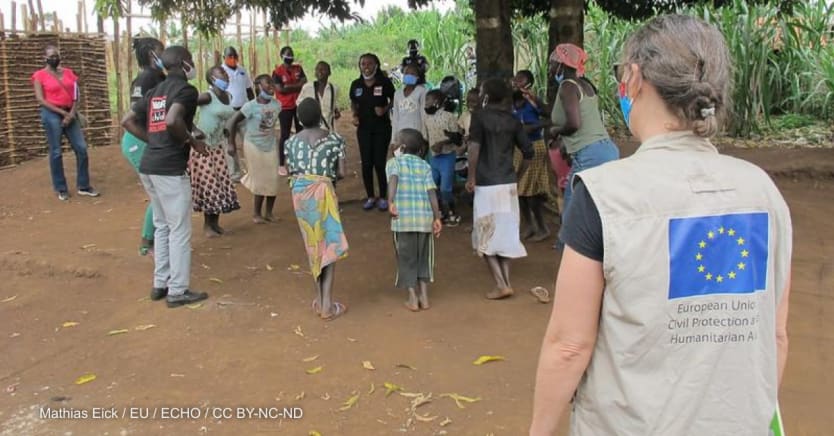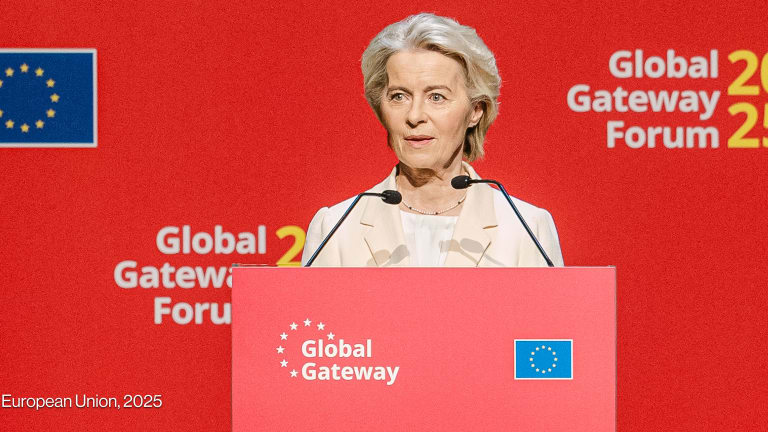
When EU development ministers met in April to debate strengthening the future European financial architecture for development, their task was to identify a strategy to overcome respective “overlaps, gaps and inefficiencies, sectoral and geographical.”
The so-called Wise Persons report suggested that maintaining the status quo for the European development finance system was not an acceptable option for the future, and recommended consolidating the European development finance and climate activities outside the EU into a single well-capitalized entity, referred to as European Climate and Sustainable Development Bank.
The present fragmentation of the system is detrimental to the fulfillment of the EU's priority goals and its desired development impact.
After the report’s publication, the EU’s bilateral development finance institutions and the European Commission, the European Investment Bank, and the European Bank for Reconstruction and Development entered a political tug-of-war over Europe’s driver seat in future development policy financing.
Interested spectators were waiting in anticipation of whether the EU Council would come out — as in the famous movie “Groundhog Day” — and see its shadow on April 29.
The European Union, for some reason, seems to be afraid of moving forward from a global payer to a global player in international infrastructure development cooperation.
—It seems that winter will not yet end. The “Status Quo+” option will prevail, although it is likely to fuel further competition between European development finance institutions instead of creating synergies.
EU development ministers have retreated to their den by echoing a preference for maintaining the status quo for EFAD, suggested just in time by a ready-made feasibility study. The only enhancement of the current institutional setup might be adding a trendy “plus” to the status quo.
If you ask, this little extra might entail some form of stronger coordination and the development of joint and complementary investments among European development financial institutions, but without engaging in any kind of significant institutional changes.
In plain language, the EU is shying away from transformational change. If there wasn’t a €67 billion ($82 billion) of EU Official Development Assistance at stake, it would be reassuring to see that the EU, as an entity, is not much different from each of its citizens, in that it considers more of the same as a proper solution.
Thus, the EU is destined to unconsciously repeat patterns over and over again, sometimes with significant and painful consequences.
Boosting the EFAD’s status quo with a “plus” will only cement existing deficits and challenges, such as fragmentation, overlaps, lack of policy coherence, and ineffective coordination.
First, the current blending of EU grant funding under the lead of non-European partner institutions is leading to a decrease in EU visibility and control over project implementation.
Second, European development finance institutions are individually pursuing different missions, and the EU has failed to identify a recipe for overcoming fragmentation and duplication.
Third, the EU patchwork approach is unappealing for Europe’s partner countries and unattractive for European companies in light of different procurement requirements, financing conditions, entry points, and risk approaches.
In a nutshell, the status quo — even with a plus — disregards the needs of the private sector, which has been widely acknowledged as the solution to bridging the U.N. Sustainable Development Goals financing gap.
Neither does it increase Europe’s institutional competitiveness in financing large infrastructure projects outside the EU, for instance, by establishing a versatile EU financing institution that can combine European development and export finance, matching the performance of Asian and U.S. financing institutions.
The European Union, for some reason, seems to be afraid of moving forward from a global payer to a global player in international infrastructure development cooperation. So far, it has rejected the Wise Persons Report’s recommendation to establish a strong European Climate and Sustainable Development Bank under the EIB umbrella.
It will probably also fail to respond to U.S. President Biden’s recent call that democratic countries should develop an infrastructure plan to rival China’s Belt and Road Initiative.
Wieser slams EU's 'Status Quo+' development reform plans
Without fresh money, the chair of the Wise Persons Group says attempts to improve EU development finance are doomed to fail.
What the EU should do as a minimum is to join the Blue Dot Network, a multistakeholder initiative formed in November 2019 by the U.S., Australia, and Japan. The Blue Dot Network aims to operationalize existing international standards to promote a shared vision of quality infrastructure investment that is open and inclusive, transparent, economically efficient, financially viable, resilient, and environmentally and socially sustainable.
The network will convene governments, private sector, and civil society to develop a certification system for global infrastructure development.
Linking the Team Europe approach with the Blue Dot Network initiative would not only provide an opportunity for the EU to transfer its Green Deal, digitalization, and governance ideals to the global level. But it would also enlarge the EU’s toolbox to level the playing field in development finance. Still, the EU is on the fence.
The Blue Dot Network would need to expand beyond its three current members and invitee India to be successful. At that point, traditional allies and infrastructure lenders such as the EU and South Korea, already deeply committed to green growth principles, would be logical country partners.
The creation of a Blue Dot Network by many of China’s biggest rivals could pressure China into responding to these new standards. But is Europe ready to join such an alliance?
The EU Council will soon take up the conclusions on the future EFAD. It is high time that it wakes up and chooses real transformation over pseudo change.








